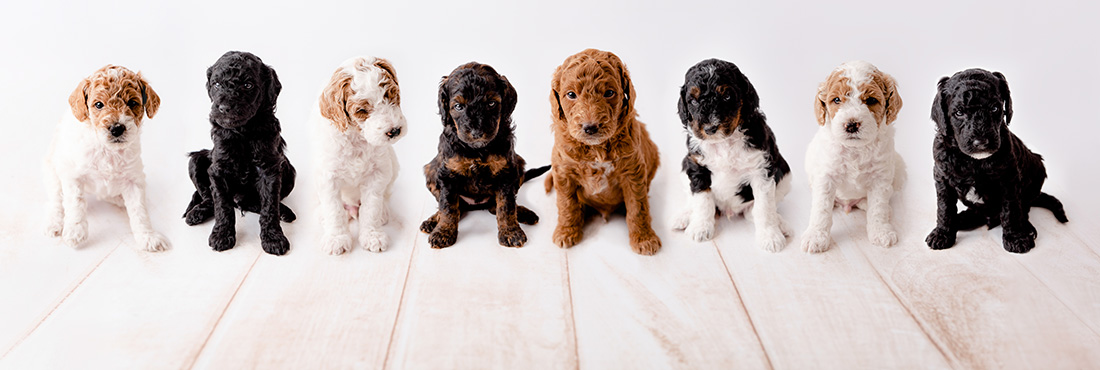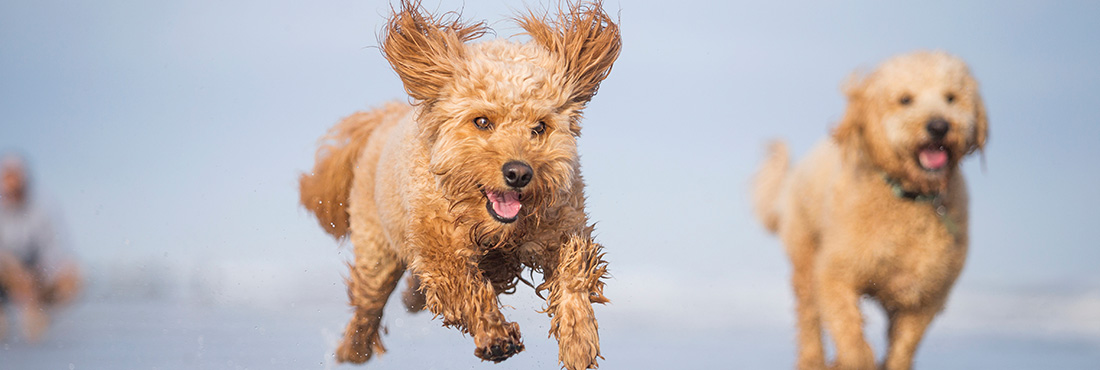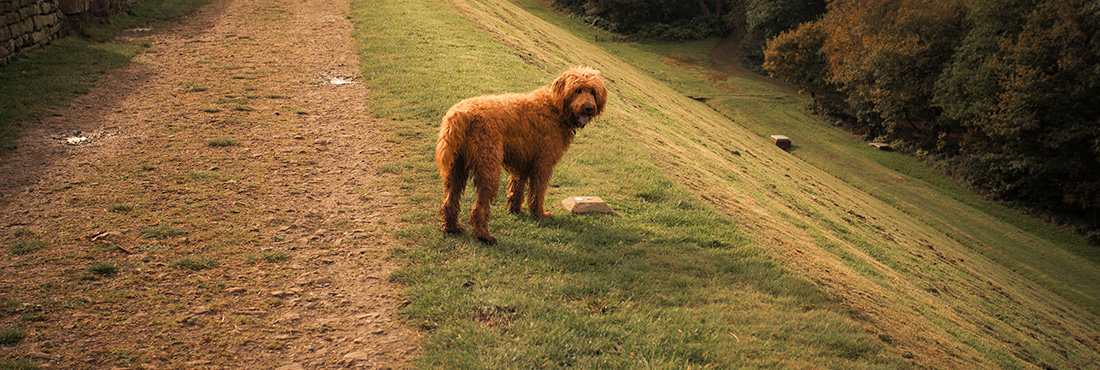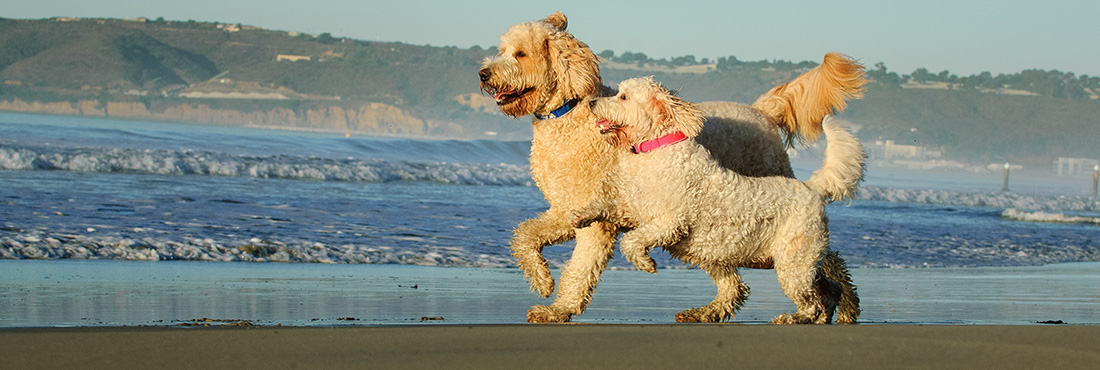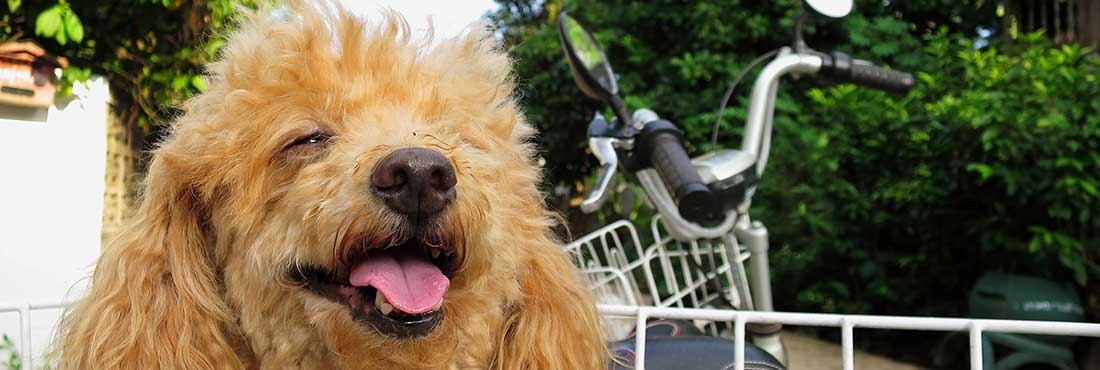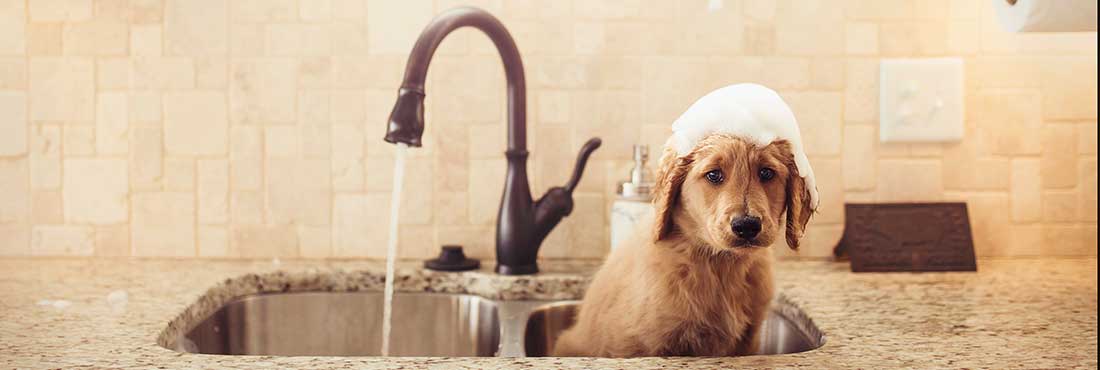In this article, we will take an in-depth look at Goldendoodle dogs and the different types that exist. If you are looking to welcome a sweet Goldendoodle dog into your home, then you might want to consider what color to buy, as some Goldendoodle colors are significantly more expensive than others. We will list some of the most common colors and look at different patterns. We will also answer your most commonly asked questions, so by the end of the article, you will know which Goldendoodle color is the best fit for you, whether they shed differently, and how it’s possible for a Goldendoodle’s coat to completely change color and also if the dog’s coat fades with age.
Keep reading to find out more…
What is a Goldendoodle?
To start, we’ll look at the Goldendoodle and talk about the breed and how it came about.
What Do you Get When you Cross a Poodle and Golden Retriever?
A Goldendoodle, of course!
It sounds like the start of a joke. Still, dog breeding is serious, and reputable Goldendoodle breeders take their jobs very seriously to ensure you have a happy, healthy Goldendoodle puppy!
Goldendoodles have a gentle and playful temperament, and their popularity has risen dramatically over the years, not only because of their adorable “teddy bear” looks but because they are hypoallergenic and don’t shed as much as other dog breeds with longer hair.
In a way, these designer dogs have a misleading name. Labeled as such because of their hybrid mix of Golden Retriever and Poodle, many people assume that this dog is golden in color, but in fact, there are lots of Goldendoodle colors and patterns.
Common and Rare Goldendoodle Colors
| Goldendoodle Color | Coat Description | Rare or Common? |
|---|---|---|
| Black | Pure black | Rare |
| White | Pure white | Rare |
| Apricot | Light red/brown | Common |
| Black & White Parti | 50% minimum white with black | Rare |
| Champagne | Pale yellow | Common |
| Tan | Mid-brown | Common |
| Brindle | “Tiger-striped” appearance with stripes and red base | Rare |
| Gray/Blue | Dark gray/lighter patches | rare |
| Chocolate | Dark brown | Rare |
| Cream | Light yellow | Common |
| Merle | Blue or chocolate base with lighter spots | Rare |
| Parti | 50% minimum white with chocolate, apricot or tan | Rare |
| Sable | Black tips with any color | Rare |
| Red | Rich red/brown tone | Common |
| Phantom | Mix of two colors in specific places | Rare |
| Silver | Light gray/blue | Rare |
| Tuxedo | Apricot, tan, red, black with patches that appear like a tuxedo | Rare |
| Tricolor | Tan, Black and white | Rare |
Goldendoodle Colors
Below we will list many of the most common Goldendoodle colors as well as those that are rarer. Before moving on to Goldendoodle patterns, we’ll discuss the colors and how they appear.
Apricot
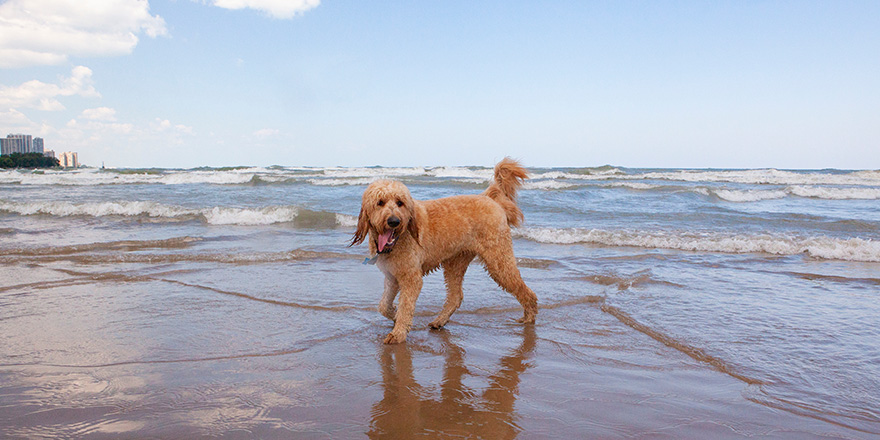
Apricot Goldendoodles are quite common, and one of the main reasons for this is their coloring makes them look like giant teddy bears! This is a popular color to breed as the American Kennel Club recognizes apricot Poodles as an official color, and dog owners just love this shade.
Inherited by both parents, the shade is best described as a light red, but this is often mistaken for red Goldendoodles. Apricot Goldendoodles are different as their shade is lighter. Another interesting fact is that apricot Goldendoodles have darker points in black or brown shades around their eyes, noses, and paw pads.
Red
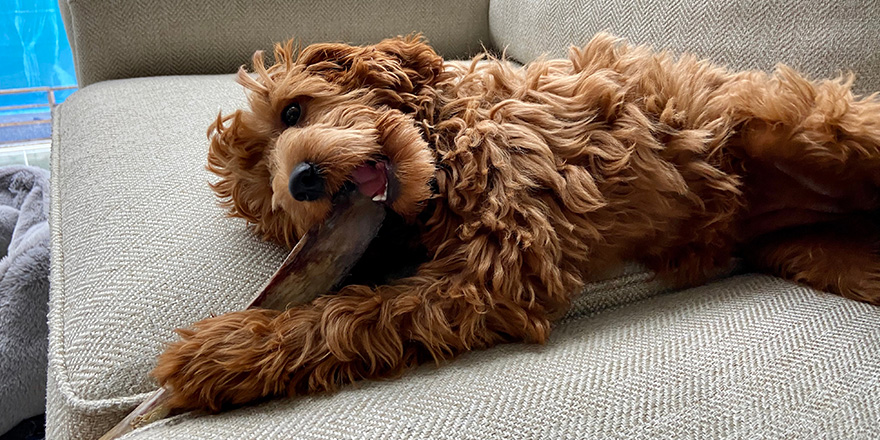
Red Goldendoodles are also very common because doodles with this coat have a “teddy bear” appearance (can you see a theme here?). Often mistaken with apricot Goldendoodle dogs, their fur is different as the shade is much more intense with fiery, rich mahogany tones.
Goldendoodle dogs get their color from both parents, but the Poodle parent seems to have a bigger impact on the outcome of Goldendoodle puppies and their coloring.
Gray
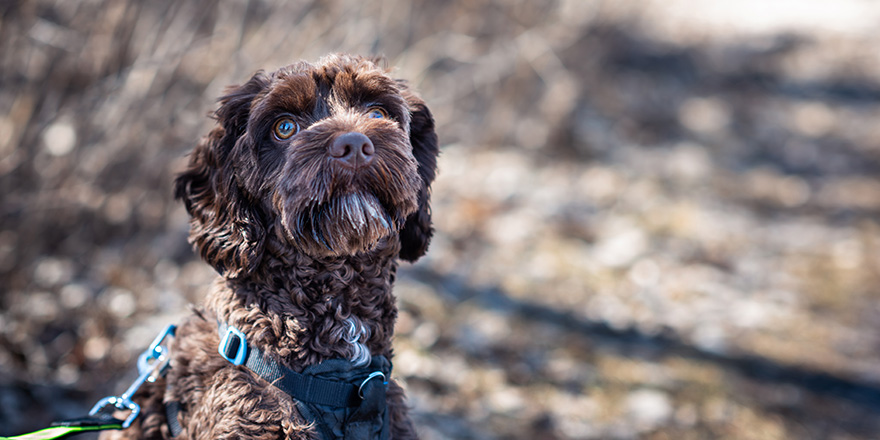
Gray Goldendoodles are born with quite a dark fur that can appear black. The gray tones start to appear around six weeks, so when breeding Goldendoodles, it can be tricky to know exactly what shade the dog will be until this period has elapsed. Goldendoodle dogs will have fully gray hair when they reach around two years old.
This color is rare because people prefer apricot Goldendoodle dogs or red Goldendoodle colors because they have a more toy-like appearance.
Black
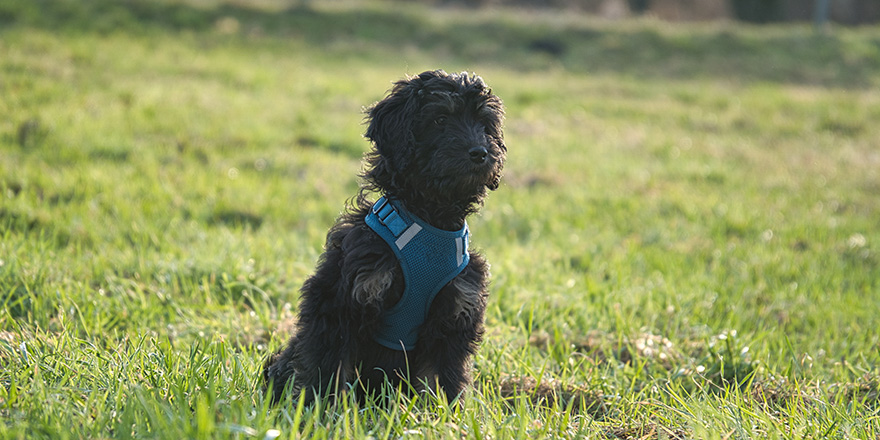
Pure black Goldendoodle dogs are rare. These dogs are bred from a Poodle and Golden Retriever with the black recessive gene. Only slowly becoming more and more popular, the black Goldendoodle hasn’t been the first choice for many dog owners over the years, with them favoring the more popular shades of apricot and red.
If both dog parents carry the special black recessive gene, then chances are you will have a pure black dog, which is only considered “pure” when its eyes, nose, mouth, and paw pads are also black.
Blue
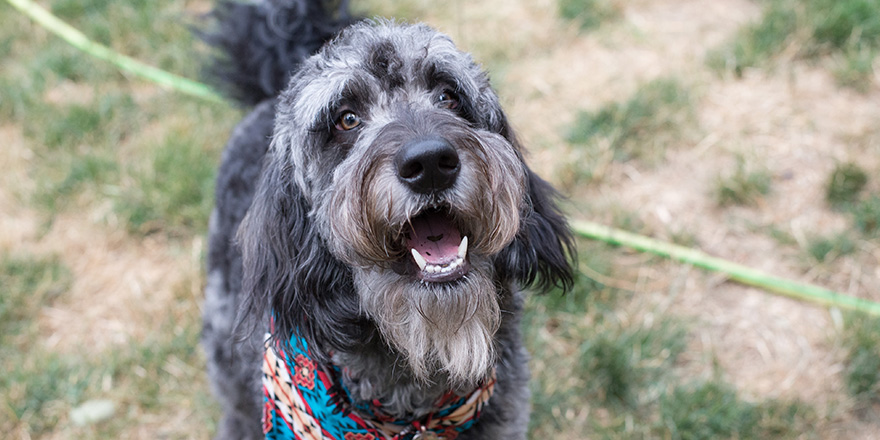
Not to be confused with gray or silver Goldendoodles, blue Goldendoodles are super rare and can be easily mistaken for another color type. You can tell a blue Goldendoodle by looking at the dog’s stomach area, which will not look as “icy” as the rest of its coat.
Blue Goldendoodles have a bluish tone to their fur and have been born from several generations of breeding with blue poodles.
Champagne
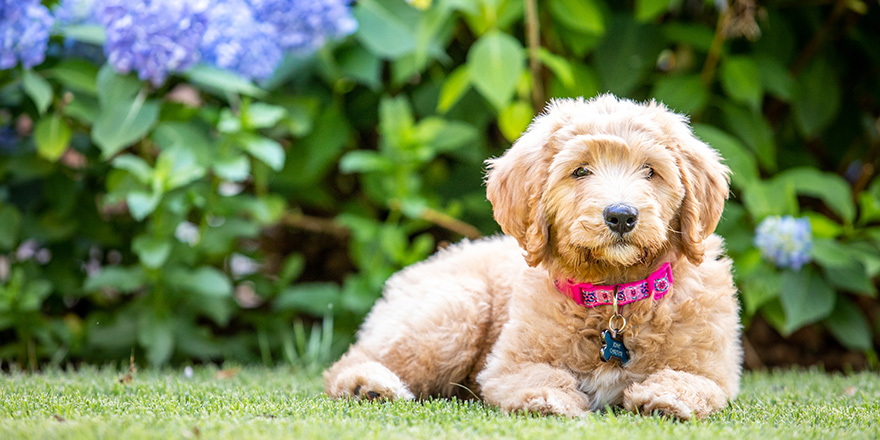
Champagne Goldendoodles are rare and beautiful. When these Goldendoodle puppies are born, they are darker in the shade and look dark and golden. After around ten weeks, these dogs will change color, and their coat will fade to a light golden shade. It takes a Golden Retriever and Poodle parent that carries the red dilute gene to create a champagne Goldendoodle dog.
These dogs are very light in appearance and have either a pale yellow tone or dark cream coloring.
Cream Goldendoodles and champagne Goldendoodles are often mistaken for one another, but the champagne Goldendoodle usually has a richer tone.
Silver
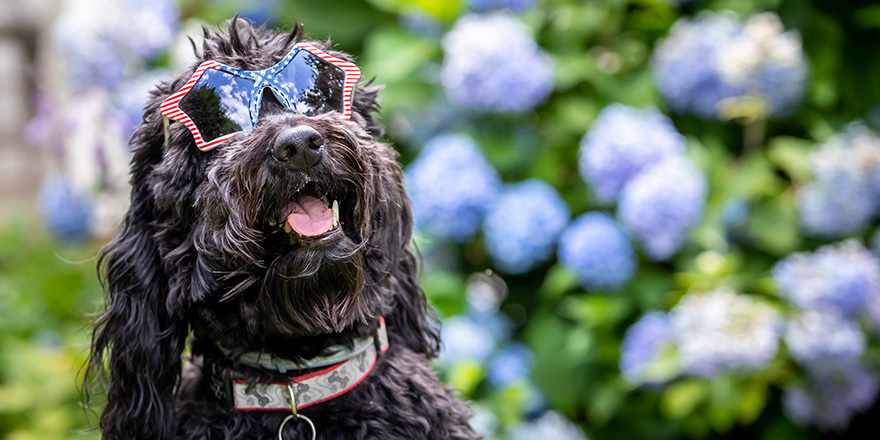
Silver Goldendoodles result from many generations of breeding and are, therefore, rare. Their coat tends to lighten as they age, turning a silvery shade by the time they reach around two years.
Silver Goldendoodles are often mistaken for gray and blue Goldendoodle dogs. The difference is that this dog has a lighter shade that usually appears when they are around six to ten weeks old.
Chocolate
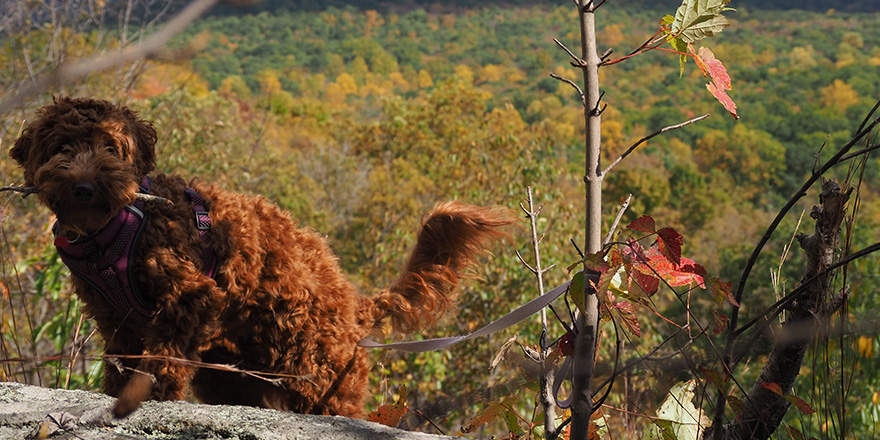
If you ever saw a chocolate Goldendoodle puppy, you wouldn’t believe that this dog could transform its coat dramatically. This is another example of a Goldendoodle dog being born a different shade. Chocolate Goldendoodles are born with dark fur and can often be mistaken for black Goldendoodles. At around six weeks old, the dog’s coat will have lightened, so the breeder will know what shade it is likely to stay.
A chocolate Goldendoodle has a beautiful rich, dark brown tone, and their paw pads, eyes, and noses match their fur color too. Chocolate Goldendoodles get their coloring from their dominant Poodle genes because the American Kennel Club (AKC) states that brown is a standard Poodle color.
Despite its luxuriant shade of fur, the black or chocolate Goldendoodle is not one of the most popular choices for dog owners. Apricot and tan always come up top.
White
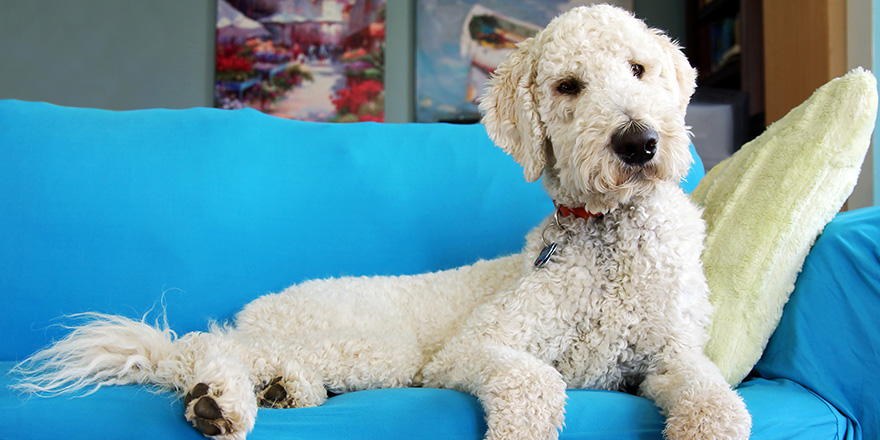
Because golden retrievers are never white, white Goldendoodles inherit white fur from their Poodle parent genes.
Contrary to popular belief, white Goldendoodles are not pure white. The white Goldendoodle dog has cream in areas of its coat, and you rarely find a white Goldendoodle with pure white markings. They do, however, appear solid white when viewed at a distance.
Unlike a few other Goldendoodle colors we’ve discussed, the white Goldendoodle is born white and remains that color throughout their life.
The white Goldendoodle has paw pads, lips, eyes, and noses always black.
Patterned Goldendoodles
We have spoken a little about the different Goldendoodle colors, but the list isn’t endless. There are shades of Goldendoodle and combinations of colors, too, such as sable Goldendoodles, cream Goldendoodles, and more!
Their coat colors come in various colors, from dark golden and dark brown to silver beige. You can even get black and white Goldendoodles.
These designer dogs can also have various coat patterns, which we will explore below…
Brindle
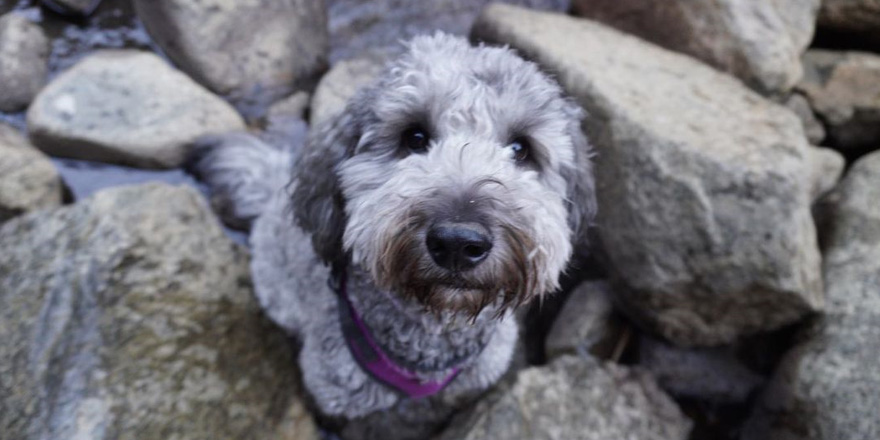
Photo by @brynn.the.brindle, Instagram
Brindle Goldendoodles are rare and have an interesting striped coat pattern that resembles a tiger. The base color of this dog is usually red, and the stripes are normally black. The size and shape of the stripes vary from dog to dog, so no two brindle Goldendoodles will ever look the same.
Because these dogs are so rare, you can expect to pay significantly more money to buy one.
Tuxedo
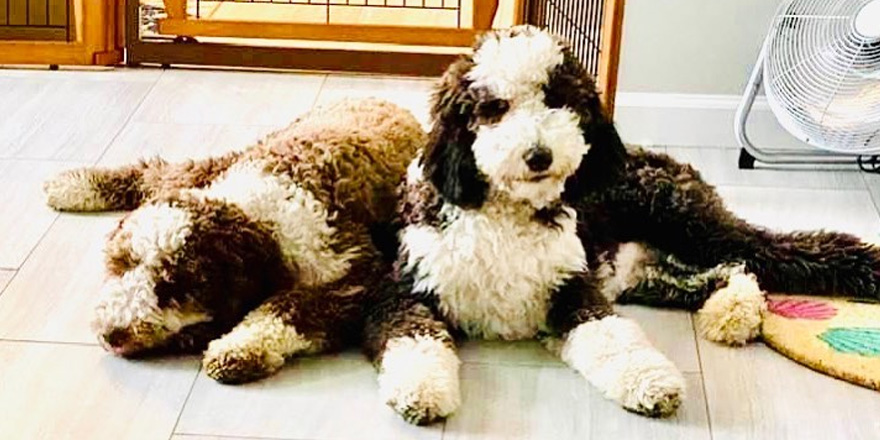
Photo by @sweetsoutherndoodles, Instagram
Tuxedo Goldendoodles look exactly how you would expect, with a unique coat pattern that gives the appearance of the dog wearing a tuxedo. Looking at a photo of these dogs, it’s easy to see why the pattern may look like this, as they usually have white areas, mainly around the chest, stomach, and hind legs.
Merle
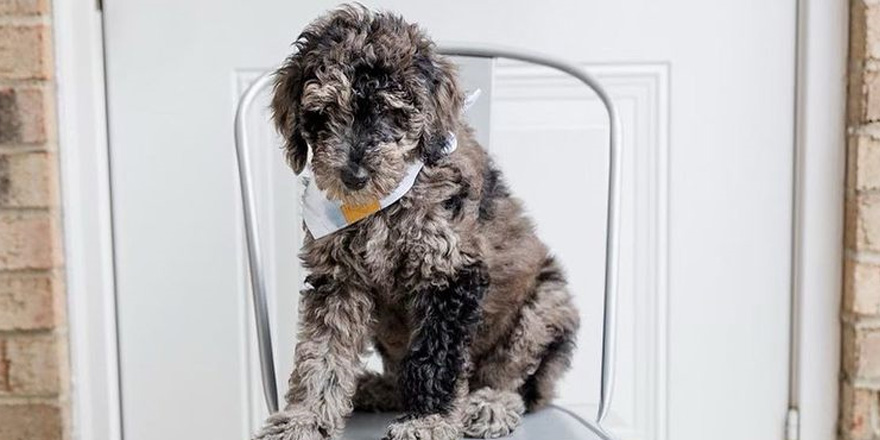
Photo by @djbrianjay, Instagram
The merle Goldendoodle is created when one of the parents carries the merle gene. As this gene isn’t often present in golden retrievers or poodles, these dogs are usually bred by mixing a poodle with a border collie, which means that technically they are not Goldendoodles.
The base color of a merle Goldendoodle is usually red and blue, and the pattern itself has a mottled appearance, with darker patches on the fur.
In rare instances, the merle Goldendoodle is born with a lighter base shade.
Parti
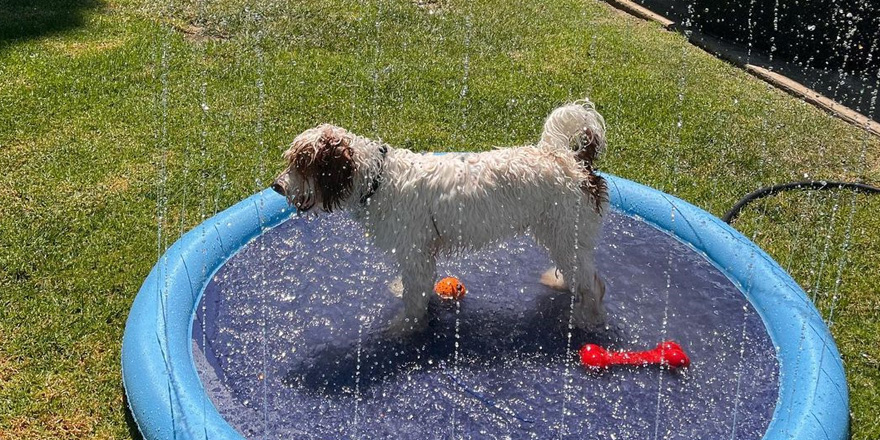
Photo by @sully_minidood, Instagram
Parti Goldendoodles have a base shade of at least 50% white with color patches in shades that are normally tan or apricot.
Recessive genes mean that one color will override the base color, resulting in a rare dog.
Phantom
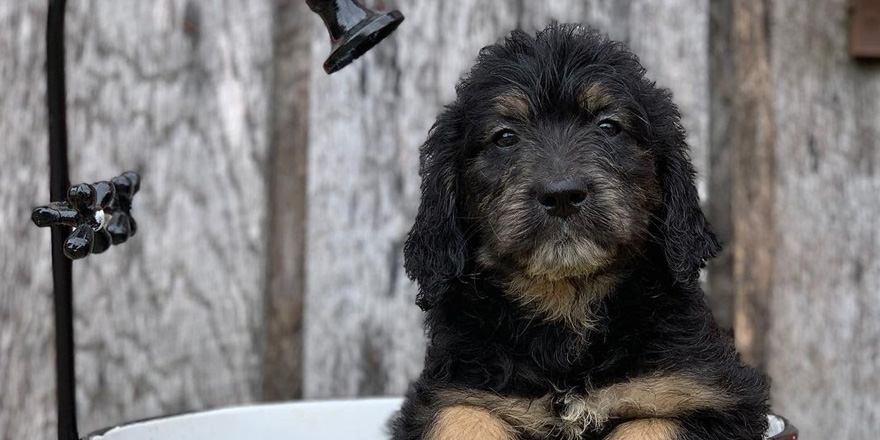
Photo by @guinnfamilyfarms, Instagram
Phantom Goldendoodles usually have a black base color and red or tan colors around the lower portion of their legs, muzzle, and eyes. If you imagine a rottweiler or Doberman coloring, you’ll have a good idea of how it might look on a Goldendoodle.
Because doodles come in various colors, they can also have the “phantom” markings in red, black, and silver.
The coat color of a phantom Goldendoodle is usually more than 50% black.
Conclusion
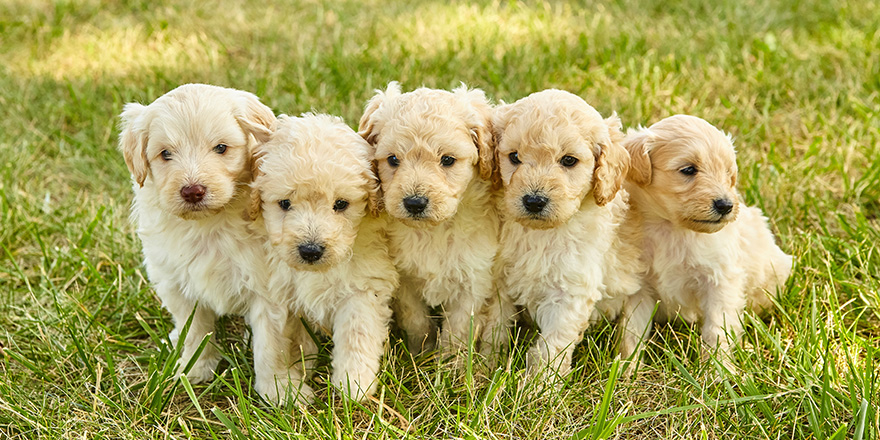
There are so many Goldendoodle colors to choose from it can be difficult to choose which is the right fit for you. Reputable breeders will always tell you that the coat colors shouldn’t matter with this breed of dog because the dog’s health is the most important factor.
Having said that, it’s easy to understand why people choose certain coat colors over others. Apricot Goldendoodles and tan Goldendoodles are popular because they look like cuddly toys! But don’t let this put you off getting a Goldendoodle in a less popular color. They are all wonderful family dogs that would make a happy addition to any home.
Remember that the rarest Goldendoodle colors are more expensive if you are set on color. You should expect to pay more for merle Goldendoodles, parti Goldendoodles, and phantom Goldendoodles – anything with unusual colors and patterns.
Frequently Asked Questions
If you have your heart set on a particular Goldendoodle puppy and take it home before it's ready, you might be in shock! This is because Goldendoodles usually change color, and Goldendoodle puppies often change within the first six to ten weeks, depending on their base coat.
A white Goldendoodle will normally stay the same color from infancy, whereas tan Goldendoodles, black Goldendoodles, and apricot Goldendoodle dogs often change. So if your pup appears to be black, don't be surprised if, after a while, its fur lightens to a silver beige. Likewise, Tan Goldendoodles can lighten to apricot shades and cream Goldendoodles to a whiter shade.
If you are looking for guarantees, either adopt or buy your dog once its coat has been developed or speak to a reputable breeder who advises.
Goldendoodles come in a wide variety of colors, yet only some of the colors are recognized by the AKC. A Goldendoodle will inherit its color from either its poodle parent or golden retriever parent. The American Kennel Club acknowledges several colors of the Golden Retriever: light golden, dark golden, and golden. However, it recognizes more from the Poodle: brown, cream, apricot, silver, gray, and blue.
In a word, yes. And this is something that you should expect. A Goldendoodle puppy will often lighten and, in some cases, completely change color within the first ten weeks of its life, and its coat color will usually be fully matured by the age of one. But adult Goldendoodles can also change color too. Goldendoodles generally lighten and fade with age, much like human hair.
Goldendoodle colors and patterns come at a price, with the rarest colors being the most expensive. If you're looking to buy a Goldendoodle puppy and want to keep your costs down, then it's best to choose a more common color. The apricot Goldendoodle, sable Goldendoodles, and tan Goldendoodles are the most commonly sought-after dogs.
It might not seem obvious, but black Goldendoodles are rare, and you should expect to pay more for these dogs.
A dog's coat color and coat tones can significantly impact the price you pay. Dogs with varied coat patterns such as merle, parti, tuxedo, and phantom Goldendoodles will all cost more as they are so rare.
Not all Goldendoodle coats fade with age, but many do. To explain this, we must look at the genetics that makes up this dog breed. A Goldendoodle is a mix of a golden retriever and a poodle, and as we already know, there are many colors of Goldendoodles, which can affect whether or not they fade and just how much they can fade over the years.
Poodles carry a gene that makes their coat fade with age, and when choosing a Goldendoodle puppy, it's worth noting that their coat can not only lighten within the first few weeks, up to a year, but they can even change color. For example, black Goldendoodles can fade to a more silver tone in their older age, and red Goldendoodle dogs will likely fade to a more copper tone. A sable Goldendoodle is usually born brown or black before lightening to a different shade. If you choose a white or cream Goldendoodle, then if fading occurs, it will be less noticeable.
The popularity of Goldendoodle dogs has grown over the years partly due to their adorable looks and friendly and fun personalities but also because they are hypoallergenic. Color doesn't affect how much your dog will shed, genetics plays a role in this. If your doodle has a higher percentage of Poodle genes (which has short, curly fur), then your dog is likely to shed less than a Goldendoodle with dominant golden retriever genes (which has longer fur).

